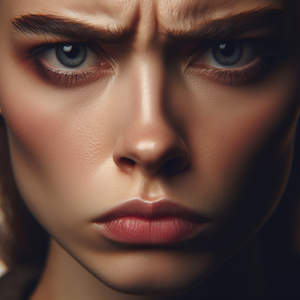The Intersection of Creativity and Technology in Ad Careers

The advertising industry has undergone a seismic shift over the past decade. The rise of digital platforms, coupled with advancements in technology, has transformed how brands connect with consumers. Traditional advertising methods are being replaced by data-driven campaigns that require a blend of creative storytelling and technical know-how. For instance, social media advertising has allowed brands to engage with consumers on platforms where they spend much of their time, but it also demands that advertising professionals be adept in analytics to measure and optimize their campaigns effectively. Additionally, innovations such as artificial intelligence (AI) and big data analytics are reshaping the landscape. These tools allow advertisers to gather insights into consumer behavior, preferences, and trends, enabling them to craft personalized messages that resonate deeply with target audiences. As a result, professionals in the field must adapt to this new reality by honing a diverse skill set that includes everything from graphic design and copywriting to data analytics and coding.
Showcasing Professionals Who Excel at the Intersection
To illustrate the successful fusion of creativity and technology in advertising, we can look at the journeys of several industry leaders. One such example is Sarah, a creative director at a leading digital agency. With a background in graphic design and a passion for technology, she has spearheaded numerous campaigns that leverage augmented reality (AR) to create immersive brand experiences. For instance, her recent project for a fashion brand allowed consumers to virtually try on clothes using AR technology, which not only captivated the audience but also drove significant sales. This project exemplifies how combining creative vision with technological tools can lead to groundbreaking advertising strategies. Another standout is Mark, a data analyst turned creative strategist. His unique perspective combines analytical insights with creative direction. Mark has led campaigns that utilize machine learning algorithms to predict consumer behavior, allowing his team to craft personalized messages that resonate on a deeper level. His approach exemplifies how understanding data can enhance creativity, leading to more effective advertising strategies. By analyzing engagement metrics and consumer feedback, Mark's team was able to pivot their creative direction mid-campaign, optimizing their messaging for maximum impact.
Essential Skills for Success
To thrive at the intersection of creativity and technology, professionals must develop a multifaceted skill set. Here are some key competencies that can enhance one's career in this hybrid environment: 1. **Technical Proficiency**: Familiarity with tools and technologies such as Adobe Creative Suite, HTML, CSS, and data analytics platforms is essential. Understanding how to leverage these tools can enhance creative output and improve campaign effectiveness. 2. **Creative Problem-Solving**: The ability to think outside the box and approach challenges from unique angles is crucial. This skill allows professionals to develop innovative solutions that capture consumer attention in a crowded marketplace. 3. **Data Literacy**: As data-driven decision-making becomes more prevalent, professionals must learn to interpret data and translate it into actionable insights. Being able to analyze metrics can inform creative strategies and optimize campaign performance. 4. **Collaboration**: Working effectively with cross-functional teams—including designers, developers, and marketers—is vital. Strong communication and teamwork skills can foster a more collaborative atmosphere, leading to richer creative outputs. 5. **Adaptability**: The advertising landscape is continuously evolving, and professionals must be willing to learn and adapt to new technologies and trends. A growth mindset is essential for staying relevant in this ever-changing industry.
The intersection of creativity and technology in advertising presents a dynamic landscape for professionals looking to make their mark. By embracing the synergy between these two domains, individuals can unlock new levels of creativity, drive impactful campaigns, and enhance their career prospects. As brands continue to seek innovative ways to engage consumers, those who can seamlessly blend creative vision with technical expertise will undoubtedly stand out in the competitive advertising arena. The future of advertising belongs to those who dare to bridge the gap between art and technology, creating experiences that captivate and inspire. As the industry continues to evolve, the demand for professionals who can navigate this intersection will only grow, making it an exciting time to pursue a career in advertising.
Digital Marketing Specialist
HubSpot, Hootsuite
Job Description
Develop and execute data-driven digital marketing campaigns across various online channels including social media, email, and search engines.
Analyze metrics and user behavior to optimize campaigns and improve ROI.
Proficient in tools like Google Analytics, SEMrush, and social media management platforms.
Creative Technologist
Wieden+Kennedy, R/GA
Job Description
Collaborate with creative teams to integrate technology into advertising campaigns, utilizing tools like AR/VR for immersive experiences.
Prototype and experiment with new digital technologies to enhance brand storytelling.
Strong knowledge in programming languages such as JavaScript or Python, alongside design software.
UX/UI Designer for Advertising
Spotify, Airbnb
Job Description
Design user-centered interfaces and experiences for advertising platforms, focusing on usability and engagement.
Conduct user research and A/B testing to gather insights that inform design decisions.
Proficient in design tools like Sketch, Figma, and Adobe XD, as well as basic HTML/CSS knowledge.
Data Analyst in Advertising
Nielsen, Kantar
Job Description
Analyze large datasets to uncover consumer insights and inform advertising strategies.
Develop and maintain dashboards to track campaign performance and identify trends.
Strong proficiency in statistical analysis tools such as SQL, R, or Python, as well as experience with visualization tools like Tableau.
Content Strategist
Coca-Cola, Unilever
Job Description
Create and oversee marketing content plans that align with brand messaging and consumer interests across multiple platforms.
Collaborate with designers and marketers to ensure cohesive branding and storytelling.
Strong writing skills, familiarity with SEO best practices, and experience with content management systems (CMS) are essential.


